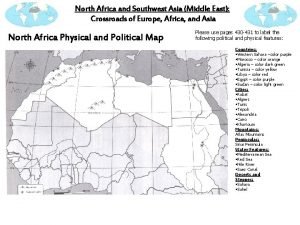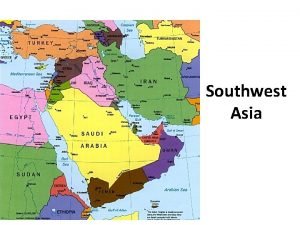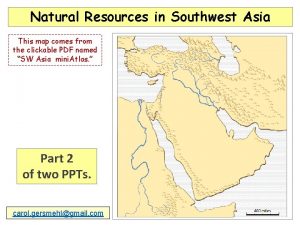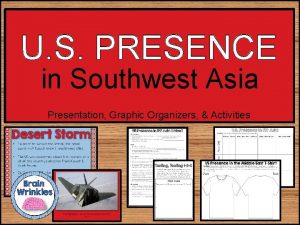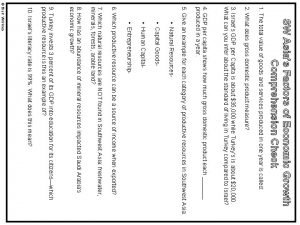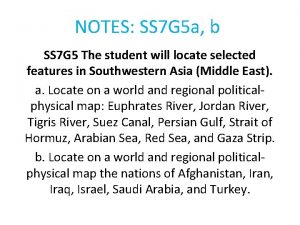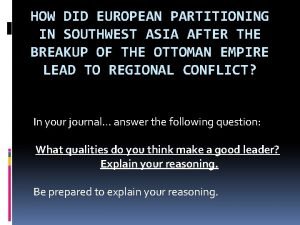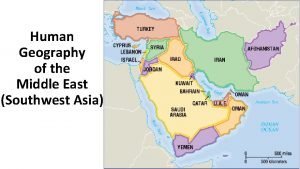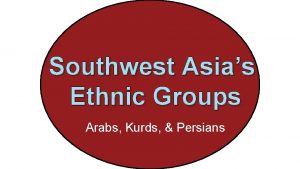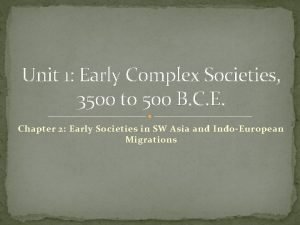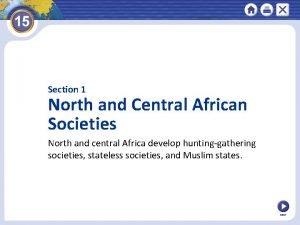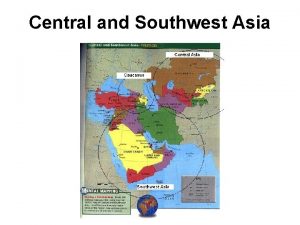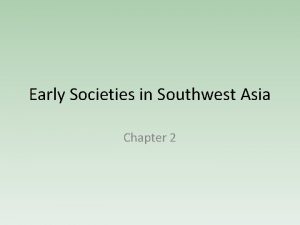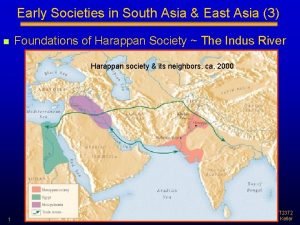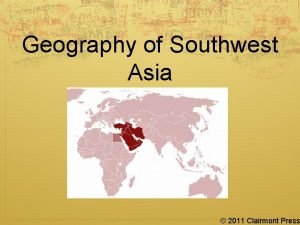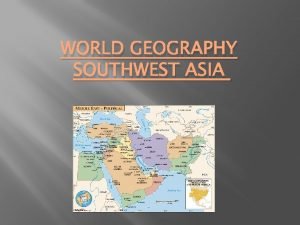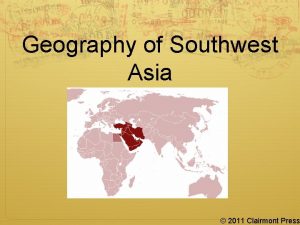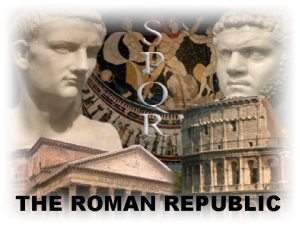Early Societies in Southwest Asia and the IndoEuropean











































- Slides: 43

Early Societies in Southwest Asia and the Indo-European Migration Chapter 2

A Note of Caution �Because this is a fast paced course, and the first 6 chapters of the textbook are only 5% of what is covered on the AP World History exam, this presentation is condensed. �In order to be fully prepared for the quiz, students should make sure they are reading the textbook! �This will be true throughout the course!

Pre-history �Pre-history is before the written record. �How do we know what happened during Pre-history? �Artifacts are a key tool to discovering both Pre and Historical events. �Artifacts reveal information about the lives of early peoples. �These are discovered by Archeologists and Anthropologists.

Evolution of Mankind �Human beings clearly stand out as the most distinctive of the primate species. �Whereas other animal species adapted physically and genetically to their natural environment, human beings altered the natural environment to suit their needs and desires. �Anthropologists call humans and other human-like creatures hominids. �Some notable types of hominids include Australopithecus ( the southern ape), Homo erectus (upright-walking human), and Homo sapiens (consciously thinking human) �Homo-Sapiens differed from other hominids because they buried their dead, had high intelligence, and spoke several languages. �This time period is referred to as the Paleolithic Era

Global Migrations of Homo erectus and Homo sapiens

Early Humans �Lucy o Discovered by Donald Johanson in 1974 in Ethiopia. She was an Australopithecus or “southern ape”. �Neanderthal o Scientists think Neanderthals had religious beliefs because they buried meat and tools with their dead �Cro-Magnon o One thing that made the Cro-Magnon’s different from other hominids was that they painted pictures on cave walls



Neolithic Revolution �Early humans were nomadic, meaning they traveled many different places in search of food. �The Neolithic Agricultural Revolution was a slow process that shifted people from food gathering to food producing and revolutionized early human life. �Nomads & Foragers start farming which allowed them to have a reliable source of food. �As a result, the population exploded.

Early Agricultural Society �Historians estimate that before agriculture, about 10, 000 BCE, the earth’s human population was 4 million. �By 5000 BCE, when agriculture had appeared in a few world regions, human population had risen to about 5 million Year Human Population 3000 BCE 14 million 2000 BCE 27 million 1000 BCE 50 million 500 BCE 100 million

Origins and early spread of agriculture

Mesopotamia �Mesopotamia comes from two Greek words and means “the land between the rivers”. �This refers to the fertile valleys of the Tigris and Euphrates rivers which are in modern-day Iraq. �People in these areas soon realized that by tapping into these rivers, building reservoirs, and digging canals, they could irrigate fields of barley, wheat, and peas.

River Valley �The valley is known by many names, Tigris-Euphrates River Valley, Mesopotamia, Babylonia, The Fertile Crescent and Sumer. �Unlike the Nile, the flooding of the Tigris and Euphrates could not be predicted. �Early people of the valley viewed nature and the gods as harsh and unpredictable

Sumerians �These pastoral nomads settled in Mesopotamia about 5000 BCE creating the civilization of Sumer �Ur and Uruk were the largest cities with close to 50, 000 people �This organization of people led to massive development of Mesopotamia �Canals, dams; which needed a centralized government �Sumerian government developed into city states �Competing city states would go to war over resources


Life in Sumer �Temples were known as ziggurats. �The Sumerians also invented the arch. �The Sumerian gods were identified with forces of nature and heavenly bodies, such as the sun and moon. �Polytheistic �Made sacrifices to please the gods �They buried their dead with some possessions, but did not believe in a vivid afterlife �Upper class women enjoyed some freedom �Owned property, have income �Marriages were arranged and only boys were educated



Ziggurats

Sumer Economy and Trade �As farming increased food surplus, specialization of labor allowed for craftspeople to create goods �Sumerians traded extensively by land sea �Egypt, Persia, Southeastern Africa, India (Harappa) �Pottery, cloth, utensils in bronze �The introduction of specialized labor would change the social structure of Sumerian life �New class of wealthy, nobles and land owners � 40% of people were slaves

Sumerian Contributions �Cuneiform as invented as a writing system for record keeping �Inventions: cart, metal plow, sun dial, 12 month calendar, and Sumerian numbering system based on 60 �Epic of Gilgamesh is the oldest piece of literature �This is how historians know so much about Sumer

Writing �Sumerian pictographs are one of the earliest known forms of writing �Most signs were wedged shaped �They formed a system called cuneiform meaning wedge shaped

Decline of Sumer �Mesopotamia was an attractive location to live with plenty of water and fertile land �This attracted other groups who wanted to control the region �There were no natural barriers to stop invaders and Sumerians were not warriors at heart �Sumer fell to invaders circa 2300 BCE �Babylonians would form the next early civilization empire

The Akkadians �In 2330 BCE, the Akkadians attacked and conquered the Sumerians. �Their great ruler was Sargon. He ruled from 2334 -2279 BCE. He was the most powerful Akkadian king. �The Akkadian Empire lasted 150 years and they founded a new city called Babylon.

The Babylonians �Hammurabi is their great ruler. He comes to power in 1792 BCE. �He is most famous for the Code of Hammurabi. �The Code of Hammurabi used the principle of lextalionis or “law of retaliation”. �Women had some legal and economic rights �The Babylonians believed in many of the Sumerian gods.

Code of Hammurabi

The Assyrians �Came to power between 900 -650 BCE �Known for being fierce warriors; First to use cavalry in battle �The Assyrian Empire included Mesopotamia, Syria, Palestine, and the Nile River Valley �Their capital was called Nineveh. This is the same Nineveh mentioned in the Bible �Nineveh had a great library. In its many texts was the Epic of Gilgamesh.

The Chaldeans �Peak of power is during the reign of Nebuchadnezzar, 605 -562 BCE �Known for their skills in math and science �Created one of the great wonders of the ancient world, the Hanging Gardens of Babylon

Mesopotamian Empires, 1800 -600 B. C. E. 29

Social Classes in Mesopotamian Societies �Ruling classes based often on military prowess �Perceived as offspring of gods �Religious classes �Role: intervention with gods to ensure good fortune for community �Considerable landholdings, other economic activities �Free commoners �Peasant cultivators �Some urban professionals �Slaves �Prisoners of war, convicted criminals, debtors 30

Patriarchal Society �Men as landowners, relationship to status �Patriarchy: “rule of the father” �Right to sell wives, children �Double standard of sexual morality �Women drowned for adultery �Relaxed sexual morals for men �Yet some possibilities of social mobility for women �Court advisers, temple priestesses, economic activity �Introduction of the veil at least ca. 1500 B. C. E. 31

The Hittites �Settled in Mesopotamia sometime around 1600 BCE �First people to smelt iron �The Hittites had an advanced law system, different from the Code of Hammurabi, similar to our own.

Phoenicians �The Phoenicians appeared around 1200 BCE �Their main industry was trade �Phoenicia only had one, main natural resource, lumber! �The Lebanon Mountains in Phoenicia had beautiful cedar forests and many other types of trees. �Lumber was rare in many places in Asia Minor and Africa, so it was considered an important and valuable resource.

Trade �Phoenicia’s main exports were lumber, metals such as gold and silver, and hand-blown glass. �Another export was a shellfish called murex that would be used to make a purple dye. �This dye was very expensive to make, and it became the symbol of royalty throughout the ancient world. �Through their trading, the Phoenicians’ founded many cities including Carthage in North Africa.

The Phoenician World

Early Phoenician Ship

Phoenician Trading Ship

Phoenician Alphabet

The Hebrews �Most of the historical information we have on the Hebrews comes from the Bible �Modern Jews trace their heritage through the Twelve Tribes of Israel. �Key Hebrew Figures: �Abraham �Joseph �Moses –Monotheism �David �Solomon-Builder of The Temple

The Founding of Israel �After spending 40 years in the Sinai desert, the Hebrews entered a time where Judges and Prophets were the government. �Around 900 BCE, the tribes created one nation, Israel, and united under one king, Saul. �Saul was succeeded by David who founded a powerful dynasty. �David made Jerusalem the capital city & religious center for Israel.

Peak of Power �The Peak of Israeli power came during the reign of King Solomon. �Solomon made Israel a wealthy and respected nation. �He was known for his wise decisions and respected the law, such as the Torah �His great achievement was building the first Temple.

The Temple

The Fall �After Solomon’s death, the tribes split with the 10 northern tribes remaining Israel with their capital at Samaria. �The two southern tribes formed Judah with Jerusalem as its capital �The Assyrians and the Chaldeans both conquered Israel, and the Chaldeans destroyed Solomon’s Temple. �The Persian king, Cyrus allowed the Hebrews to return to Israel and rebuild the Temple.
 Southwest asia and north africa map
Southwest asia and north africa map North africa and southwest asia physical map
North africa and southwest asia physical map Nationalism in india and southwest asia
Nationalism in india and southwest asia Judaism vs christianity vs islam venn diagram
Judaism vs christianity vs islam venn diagram Swana political map
Swana political map North africa and southwest asia physical geography
North africa and southwest asia physical geography Nationalism in india and southwest asia
Nationalism in india and southwest asia Nationalism in india and southwest asia
Nationalism in india and southwest asia Peninsulas and waterways in southwest asia
Peninsulas and waterways in southwest asia Southwest asia and north africa physical map
Southwest asia and north africa physical map North africa and southwest asia mountains
North africa and southwest asia mountains Environmental issues graphic organizer
Environmental issues graphic organizer Landform in asia
Landform in asia Chapter 21 physical geography of southwest asia
Chapter 21 physical geography of southwest asia Natural resources of southwest asia
Natural resources of southwest asia Relative location of saudi arabia
Relative location of saudi arabia Chapter 22 human geography of southwest asia
Chapter 22 human geography of southwest asia Fertile crescent agricultural hearth
Fertile crescent agricultural hearth Brain wrinkles southwest asia answer key
Brain wrinkles southwest asia answer key Southwest asia comprehension check
Southwest asia comprehension check Se asian economies comprehension check answer key
Se asian economies comprehension check answer key Brain wrinkles southwest asia
Brain wrinkles southwest asia Southwest asia landforms
Southwest asia landforms Jordan river southwest asia map
Jordan river southwest asia map Republic in southwest arabia
Republic in southwest arabia Europe partitioning in southwest asia answer key
Europe partitioning in southwest asia answer key Which physical features make trade easier?
Which physical features make trade easier? Human geography of middle east
Human geography of middle east Southwest asia map kuwait
Southwest asia map kuwait Which ethnic group is most numerous in southwest asia
Which ethnic group is most numerous in southwest asia Southwest asia ethnic groups
Southwest asia ethnic groups Water pollution and unequal distribution illustration
Water pollution and unequal distribution illustration Why is water pollution of great concern in southwest asia
Why is water pollution of great concern in southwest asia Southwest asia vegetation
Southwest asia vegetation Brain wrinkles southwest asia
Brain wrinkles southwest asia Environmental issues in southwest asia
Environmental issues in southwest asia Chapter 23 today's issues southwest asia
Chapter 23 today's issues southwest asia Monotheism
Monotheism Early cpr and early defibrillation can: *
Early cpr and early defibrillation can: * It helps us understand people and societies.
It helps us understand people and societies. North and central african societies
North and central african societies Balance sheet for clubs and societies
Balance sheet for clubs and societies Mali empire spice chart
Mali empire spice chart Difference between bank and building society
Difference between bank and building society

